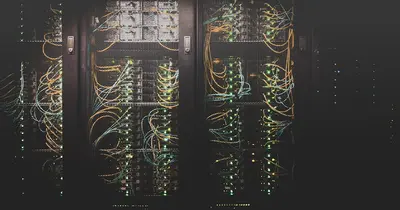🛡️ AlmaLinux Firewall Configuration: Complete Security & Protection Guide
Welcome to the essential world of firewall configuration on AlmaLinux! 🎉 Think of a firewall as the security guard at the gates of your digital fortress - it decides who gets in, who stays out, and what they can do once inside! Whether you’re protecting a home server, securing a business network, or hardening a production system, mastering firewall configuration is absolutely crucial! 🏰
Firewalls might seem intimidating at first, but they’re actually your best friend for system security! 💪 From understanding basic concepts to implementing advanced security policies, we’ll learn everything step by step. Get ready to become a security expert and create impenetrable digital defenses that keep your systems safe! ✨
🤔 Why is Firewall Configuration Important?
Firewall configuration is your first line of defense against cyber threats! Here’s why you should master it:
- 🛡️ Network Protection: Block malicious traffic before it reaches your system
- 🎯 Access Control: Control which services are accessible from which networks
- 🔐 Attack Prevention: Stop common attacks like port scanning and brute force
- 👥 Multi-Zone Security: Create different security levels for different network areas
- 📊 Traffic Monitoring: Monitor and log network traffic for security analysis
- 🚫 Service Isolation: Prevent unauthorized access to sensitive services
- ⚡ Performance: Reduce system load by filtering unwanted traffic
- 🎭 Compliance: Meet security standards and regulatory requirements
🎯 What You Need
Before we start configuring firewalls, make sure you have:
✅ AlmaLinux 8 or 9 installed and running ✅ Root or sudo access to configure firewall settings ✅ Basic networking knowledge (IP addresses, ports, protocols) ✅ Understanding of services (which services need network access) ✅ Terminal familiarity (basic command line usage) ✅ Network setup (know your network configuration) ✅ Backup plan (in case you lock yourself out!)
📝 Understanding AlmaLinux Firewall
Let’s start by understanding how AlmaLinux handles firewalls! 🎓
FirewallD vs iptables
# Check if firewalld is running
systemctl status firewalld
# Output: Shows firewalld service status
# Check firewalld version
firewall-cmd --version
# Output: Shows firewalld version number
# Check current firewall backend
firewall-cmd --get-backend
# Output: Shows backend (usually nftables)
# View default zone
firewall-cmd --get-default-zone
# Output: Shows current default zone (usually public)
# List all zones
firewall-cmd --get-zones
# Output: Shows all available security zonesCurrent Firewall Status
# Check firewall state
firewall-cmd --state
# Output: running or not running
# Get complete firewall configuration
firewall-cmd --list-all
# Output: Shows current zone configuration
# List all active zones
firewall-cmd --get-active-zones
# Output: Shows zones with associated interfaces
# Check specific zone configuration
firewall-cmd --zone=public --list-all
# Output: Shows detailed public zone configuration🔧 Basic Firewall Operations
Starting and Managing Firewall
# Start firewalld service
sudo systemctl start firewalld
# Output: No output if successful
# Enable firewalld at boot
sudo systemctl enable firewalld
# Output: Creates startup symlinks
# Stop firewalld (be careful!)
sudo systemctl stop firewalld
# Output: Disables firewall protection
# Restart firewalld
sudo systemctl restart firewalld
# Output: Restarts firewall service
# Reload firewall configuration
sudo firewall-cmd --reload
# Output: Reloads rules without losing connectionsManaging Services and Ports
# Allow a service permanently
sudo firewall-cmd --permanent --add-service=http
# Output: No output if successful
# Allow a specific port
sudo firewall-cmd --permanent --add-port=8080/tcp
# Output: Allows TCP port 8080
# Allow a port range
sudo firewall-cmd --permanent --add-port=3000-3100/tcp
# Output: Allows TCP ports 3000-3100
# Remove a service
sudo firewall-cmd --permanent --remove-service=ftp
# Output: Blocks FTP service
# Remove a port
sudo firewall-cmd --permanent --remove-port=8080/tcp
# Output: Blocks TCP port 8080
# Apply changes (always needed after --permanent)
sudo firewall-cmd --reload
# Output: Activates the permanent changes🌟 Working with Zones
Understanding Security Zones
# List all available zones
firewall-cmd --get-zones
# Output: block dmz drop external home internal public trusted work
# Get information about a specific zone
firewall-cmd --zone=public --list-all
# Output: Shows services, ports, and rules for public zone
# Get information about all zones
firewall-cmd --list-all-zones
# Output: Shows complete configuration for all zones
# Check which zone an interface belongs to
firewall-cmd --get-zone-of-interface=eth0
# Output: Shows zone for eth0 interfaceManaging Zone Assignments
# Change interface to different zone
sudo firewall-cmd --zone=home --change-interface=eth0
# Output: Moves eth0 to home zone
# Set default zone
sudo firewall-cmd --set-default-zone=home
# Output: Changes default zone to home
# Add interface to zone permanently
sudo firewall-cmd --permanent --zone=home --add-interface=eth0
# Output: Permanently assigns eth0 to home zone
# Remove interface from zone
sudo firewall-cmd --permanent --zone=home --remove-interface=eth0
# Output: Removes interface from home zone
# Apply permanent changes
sudo firewall-cmd --reload
# Output: Activates permanent zone changes✅ Advanced Firewall Configuration
Creating Custom Rules
# Add rich rule for specific IP
sudo firewall-cmd --permanent --add-rich-rule='rule family="ipv4" source address="192.168.1.100" accept'
# Output: Allows all traffic from specific IP
# Block specific IP address
sudo firewall-cmd --permanent --add-rich-rule='rule family="ipv4" source address="10.0.0.50" drop'
# Output: Blocks all traffic from specific IP
# Allow specific service from specific network
sudo firewall-cmd --permanent --add-rich-rule='rule family="ipv4" source address="192.168.1.0/24" service name="ssh" accept'
# Output: Allows SSH only from local network
# Allow port with source restriction
sudo firewall-cmd --permanent --add-rich-rule='rule family="ipv4" source address="172.16.0.0/16" port protocol="tcp" port="3306" accept'
# Output: Allows MySQL only from specific network
# Log dropped packets
sudo firewall-cmd --permanent --add-rich-rule='rule family="ipv4" source address="0.0.0.0/0" log prefix="Dropped: " level="info" drop'
# Output: Logs all dropped packetsPort Forwarding and NAT
# Enable IP forwarding
echo 'net.ipv4.ip_forward = 1' | sudo tee -a /etc/sysctl.conf
sudo sysctl -p
# Output: Enables IP forwarding for NAT
# Add port forwarding rule
sudo firewall-cmd --permanent --zone=external --add-forward-port=port=80:proto=tcp:toport=8080:toaddr=192.168.1.100
# Output: Forwards external port 80 to internal server port 8080
# Add masquerading for NAT
sudo firewall-cmd --permanent --zone=external --add-masquerade
# Output: Enables NAT for external zone
# Forward all traffic for specific protocol
sudo firewall-cmd --permanent --zone=public --add-forward-port=port=443:proto=tcp:toaddr=10.0.1.50
# Output: Forwards HTTPS traffic to internal server
# Check forwarding rules
firewall-cmd --zone=external --list-forward-ports
# Output: Shows all port forwarding rules🔧 Service-Specific Configurations
Web Server Firewall Setup
# Configure firewall for web server
sudo firewall-cmd --permanent --add-service=http
sudo firewall-cmd --permanent --add-service=https
# Output: Allows HTTP and HTTPS traffic
# Allow custom web ports
sudo firewall-cmd --permanent --add-port=8080/tcp
sudo firewall-cmd --permanent --add-port=8443/tcp
# Output: Allows custom web ports
# Restrict SSH to specific network
sudo firewall-cmd --permanent --remove-service=ssh
sudo firewall-cmd --permanent --add-rich-rule='rule family="ipv4" source address="192.168.1.0/24" service name="ssh" accept'
# Output: Allows SSH only from local network
# Apply web server firewall changes
sudo firewall-cmd --reload
# Output: Activates web server firewall rules
# Verify web server configuration
firewall-cmd --list-services
firewall-cmd --list-ports
# Output: Shows allowed services and portsDatabase Server Security
# Create database server zone
sudo firewall-cmd --permanent --new-zone=database
# Output: Creates new zone for database servers
# Configure database zone
sudo firewall-cmd --permanent --zone=database --add-service=ssh
sudo firewall-cmd --permanent --zone=database --add-port=3306/tcp
sudo firewall-cmd --permanent --zone=database --add-port=5432/tcp
# Output: Allows SSH and database ports
# Restrict database access to specific servers
sudo firewall-cmd --permanent --zone=database --add-rich-rule='rule family="ipv4" source address="192.168.1.10" port protocol="tcp" port="3306" accept'
sudo firewall-cmd --permanent --zone=database --add-rich-rule='rule family="ipv4" source address="192.168.1.11" port protocol="tcp" port="3306" accept'
# Output: Allows MySQL only from web servers
# Set interface to database zone
sudo firewall-cmd --permanent --zone=database --add-interface=eth0
# Output: Assigns interface to database zone
# Apply database server configuration
sudo firewall-cmd --reload
# Output: Activates database firewall rules🎮 Quick Examples
Example 1: Secure Web Server Setup
# Install web server
sudo dnf install httpd -y
sudo systemctl enable --now httpd
# Configure firewall for web server
sudo firewall-cmd --permanent --add-service=http
sudo firewall-cmd --permanent --add-service=https
# Output: Allows web traffic
# Secure SSH access (admin network only)
sudo firewall-cmd --permanent --remove-service=ssh
sudo firewall-cmd --permanent --add-rich-rule='rule family="ipv4" source address="10.0.1.0/24" service name="ssh" accept'
# Output: Restricts SSH to admin network
# Add custom application port
sudo firewall-cmd --permanent --add-port=8080/tcp
# Output: Allows custom application
# Block common attack ports
sudo firewall-cmd --permanent --add-rich-rule='rule family="ipv4" port protocol="tcp" port="23" drop'
sudo firewall-cmd --permanent --add-rich-rule='rule family="ipv4" port protocol="tcp" port="135" drop'
sudo firewall-cmd --permanent --add-rich-rule='rule family="ipv4" port protocol="tcp" port="445" drop'
# Output: Blocks telnet, RPC, and SMB
# Enable logging for security monitoring
sudo firewall-cmd --permanent --add-rich-rule='rule family="ipv4" source address="0.0.0.0/0" service name="ssh" log prefix="SSH-Access: " level="info" accept'
# Output: Logs SSH access attempts
# Apply all web server changes
sudo firewall-cmd --reload
# Verify web server firewall
firewall-cmd --list-all
curl -I http://localhost
# Output: Shows firewall config and tests web accessExample 2: Multi-Zone Network Setup
# Create custom zones for different network segments
sudo firewall-cmd --permanent --new-zone=dmz
sudo firewall-cmd --permanent --new-zone=internal
sudo firewall-cmd --permanent --new-zone=management
# Configure DMZ zone (web servers)
sudo firewall-cmd --permanent --zone=dmz --add-service=http
sudo firewall-cmd --permanent --zone=dmz --add-service=https
sudo firewall-cmd --permanent --zone=dmz --add-rich-rule='rule family="ipv4" source address="10.0.100.0/24" service name="ssh" accept'
# Output: DMZ allows web traffic and SSH from management
# Configure internal zone (application servers)
sudo firewall-cmd --permanent --zone=internal --add-port=8080/tcp
sudo firewall-cmd --permanent --zone=internal --add-port=8443/tcp
sudo firewall-cmd --permanent --zone=internal --add-rich-rule='rule family="ipv4" source address="10.0.1.0/24" accept'
sudo firewall-cmd --permanent --zone=internal --add-rich-rule='rule family="ipv4" source address="10.0.100.0/24" service name="ssh" accept'
# Output: Internal allows app ports and access from DMZ and management
# Configure management zone (admin access)
sudo firewall-cmd --permanent --zone=management --add-service=ssh
sudo firewall-cmd --permanent --zone=management --add-service=snmp
sudo firewall-cmd --permanent --zone=management --add-port=3389/tcp
# Output: Management allows admin protocols
# Assign interfaces to zones
sudo firewall-cmd --permanent --zone=dmz --add-interface=eth0
sudo firewall-cmd --permanent --zone=internal --add-interface=eth1
sudo firewall-cmd --permanent --zone=management --add-interface=eth2
# Apply multi-zone configuration
sudo firewall-cmd --reload
# Verify zone configuration
firewall-cmd --get-active-zones
firewall-cmd --zone=dmz --list-all
firewall-cmd --zone=internal --list-all
firewall-cmd --zone=management --list-all
# Output: Shows complete multi-zone setupExample 3: Comprehensive Security Hardening
# Start with restrictive default zone
sudo firewall-cmd --set-default-zone=drop
# Output: Drops all traffic by default
# Create hardened zone for servers
sudo firewall-cmd --permanent --new-zone=hardened
sudo firewall-cmd --permanent --zone=hardened --set-target=DROP
# Allow only essential services
sudo firewall-cmd --permanent --zone=hardened --add-service=ssh
sudo firewall-cmd --permanent --zone=hardened --add-service=http
sudo firewall-cmd --permanent --zone=hardened --add-service=https
# Implement strict SSH access control
sudo firewall-cmd --permanent --zone=hardened --remove-service=ssh
sudo firewall-cmd --permanent --zone=hardened --add-rich-rule='rule family="ipv4" source address="203.0.113.0/24" service name="ssh" accept'
# Output: SSH only from specific public network
# Add fail2ban-style protection
sudo firewall-cmd --permanent --zone=hardened --add-rich-rule='rule family="ipv4" source address="0.0.0.0/0" service name="ssh" log prefix="SSH-Attempt: " level="warning" limit value="3/m" accept'
# Output: Logs and rate-limits SSH attempts
# Block known bad networks
sudo firewall-cmd --permanent --zone=hardened --add-rich-rule='rule family="ipv4" source address="198.51.100.0/24" drop'
sudo firewall-cmd --permanent --zone=hardened --add-rich-rule='rule family="ipv4" source address="203.0.113.0/29" drop'
# Output: Blocks example bad networks
# Enable connection tracking limits
sudo firewall-cmd --permanent --zone=hardened --add-rich-rule='rule family="ipv4" source address="0.0.0.0/0" service name="http" log prefix="HTTP-Flood: " level="warning" limit value="100/s" accept'
# Output: Rate limits and logs HTTP requests
# Add ICMP restrictions
sudo firewall-cmd --permanent --zone=hardened --add-icmp-block=echo-request
sudo firewall-cmd --permanent --zone=hardened --add-icmp-block=timestamp-request
# Output: Blocks ping and timestamp requests
# Set interface to hardened zone
sudo firewall-cmd --permanent --zone=hardened --add-interface=eth0
# Apply hardened configuration
sudo firewall-cmd --reload
# Create monitoring script
cat > /usr/local/bin/firewall-monitor.sh << 'EOF'
#!/bin/bash
echo "=== Firewall Status ==="
firewall-cmd --state
echo "=== Active Zones ==="
firewall-cmd --get-active-zones
echo "=== Recent Firewall Logs ==="
journalctl -u firewalld --since "1 hour ago" | tail -10
EOF
sudo chmod +x /usr/local/bin/firewall-monitor.sh
/usr/local/bin/firewall-monitor.sh
# Output: Shows comprehensive security status🚨 Fix Common Problems
Problem 1: Locked Out of System
Symptoms: Cannot connect via SSH after firewall changes
Solution:
# If you have physical/console access:
# 1. Access system console directly
# Check current firewall status
firewall-cmd --list-all
# Temporarily allow SSH from your IP
sudo firewall-cmd --add-rich-rule='rule family="ipv4" source address="YOUR.IP.ADDRESS.HERE" service name="ssh" accept'
# Output: Temporarily allows SSH
# If that doesn't work, disable firewall temporarily
sudo systemctl stop firewalld
# Output: Disables firewall (use with caution!)
# Fix the configuration
sudo firewall-cmd --permanent --add-service=ssh
sudo firewall-cmd --reload
sudo systemctl start firewalld
# Output: Adds SSH permanently and restarts firewall
# Prevention: Always test rules before making permanent
firewall-cmd --add-service=ssh # Test first
firewall-cmd --permanent --add-service=ssh # Make permanent
firewall-cmd --reload # Apply changesProblem 2: Service Not Accessible
Symptoms: Service running but not accessible from network
Solution:
# Check if service is running
systemctl status service-name
# Output: Shows service status
# Check which port service uses
sudo netstat -tlnp | grep service-name
sudo ss -tlnp | grep service-name
# Output: Shows listening ports
# Check current firewall rules
firewall-cmd --list-all
# Output: Shows allowed services and ports
# Add missing service or port
sudo firewall-cmd --permanent --add-service=service-name
# Or add specific port:
sudo firewall-cmd --permanent --add-port=PORT/tcp
# Apply changes
sudo firewall-cmd --reload
# Test connectivity
curl -v telnet://server-ip:port
nc -zv server-ip port
# Output: Tests if port is accessibleProblem 3: Complex Rules Not Working
Symptoms: Rich rules or custom configurations not functioning
Solution:
# Check rule syntax
sudo firewall-cmd --check-config
# Output: Validates firewall configuration
# Test rule temporarily first
firewall-cmd --add-rich-rule='rule family="ipv4" source address="192.168.1.0/24" accept'
# Output: Tests rule without making permanent
# Check firewall logs for rule matches
sudo journalctl -u firewalld | tail -20
# Output: Shows firewall service logs
# Enable debug logging
sudo firewall-cmd --set-log-denied=all
# Output: Logs all denied packets
# Check kernel messages for dropped packets
sudo dmesg | grep -i "dropped\|denied"
# Output: Shows kernel firewall messages
# Verify rule order (rules are processed in order)
firewall-cmd --zone=public --list-rich-rules
# Output: Shows rich rules in order
# Remove problematic rule and recreate
sudo firewall-cmd --permanent --remove-rich-rule='problematic rule'
sudo firewall-cmd --permanent --add-rich-rule='corrected rule'
sudo firewall-cmd --reload📋 Simple Commands Summary
| Command | Purpose | Example |
|---|---|---|
firewall-cmd --list-all | Show current config | firewall-cmd --list-all |
firewall-cmd --add-service | Allow service | firewall-cmd --permanent --add-service=http |
firewall-cmd --add-port | Allow port | firewall-cmd --permanent --add-port=8080/tcp |
firewall-cmd --reload | Apply changes | firewall-cmd --reload |
firewall-cmd --get-zones | List zones | firewall-cmd --get-zones |
firewall-cmd --add-rich-rule | Custom rule | firewall-cmd --permanent --add-rich-rule='...' |
systemctl status firewalld | Check firewall | systemctl status firewalld |
firewall-cmd --state | Firewall status | firewall-cmd --state |
💡 Tips for Success
Here are proven strategies to master firewall configuration! 🌟
Best Practices
- 🎯 Start Restrictive: Begin with minimal access and add only what’s needed
- 📝 Document Rules: Keep records of why each rule exists
- 🧪 Test First: Always test rules temporarily before making permanent
- 🔄 Regular Reviews: Periodically audit and clean up firewall rules
- 📊 Monitor Logs: Watch firewall logs for unusual activity
- 🛡️ Layer Security: Use firewall as part of comprehensive security strategy
- 💾 Backup Configs: Save firewall configurations before major changes
- ⚡ Performance Impact: Monitor firewall performance on high-traffic systems
Security Guidelines
- Never expose unnecessary services to the internet 🌐
- Use specific IP ranges instead of allowing all sources 🎯
- Implement rate limiting for public services 📊
- Regularly update and patch firewall software 🔄
- Monitor failed connection attempts for attack patterns 🔍
- Use VPN for administrative access when possible 🔒
- Implement logging for security incident investigation 📋
- Test firewall rules during maintenance windows 🧪
🏆 What You Learned
Congratulations! You’ve mastered firewall configuration on AlmaLinux! 🎉 Here’s what you can now do:
✅ Basic Firewall Management: Start, stop, and configure firewalld service ✅ Service and Port Control: Allow and block specific services and ports ✅ Zone Management: Configure different security zones for network segments ✅ Advanced Rules: Create rich rules for complex access control ✅ Network Security: Implement comprehensive network protection strategies ✅ Troubleshooting: Diagnose and fix common firewall issues ✅ Security Hardening: Apply security best practices and hardening techniques ✅ Monitoring and Logging: Set up firewall monitoring and incident detection
🎯 Why This Matters
Mastering firewall configuration is essential for cybersecurity! 🚀 With these skills, you can:
- Prevent Cyber Attacks: Block malicious traffic before it reaches your services 🛡️
- Control Network Access: Implement precise access control policies 🎯
- Meet Compliance Requirements: Satisfy security audits and regulations 📋
- Protect Sensitive Data: Keep confidential information secure from unauthorized access 🔒
- Scale Security Operations: Manage firewalls efficiently across multiple systems 📈
- Build Defense in Depth: Create layered security architectures 🏰
Firewall configuration is your digital fortress wall! Whether you’re protecting a personal server or enterprise infrastructure, these skills are essential in today’s threat landscape. Remember, security is not a destination but a continuous journey of improvement and vigilance! ⭐
Excellent work on mastering AlmaLinux firewall configuration! You now have the power to create secure, well-protected systems that defend against modern cyber threats! 🙌




